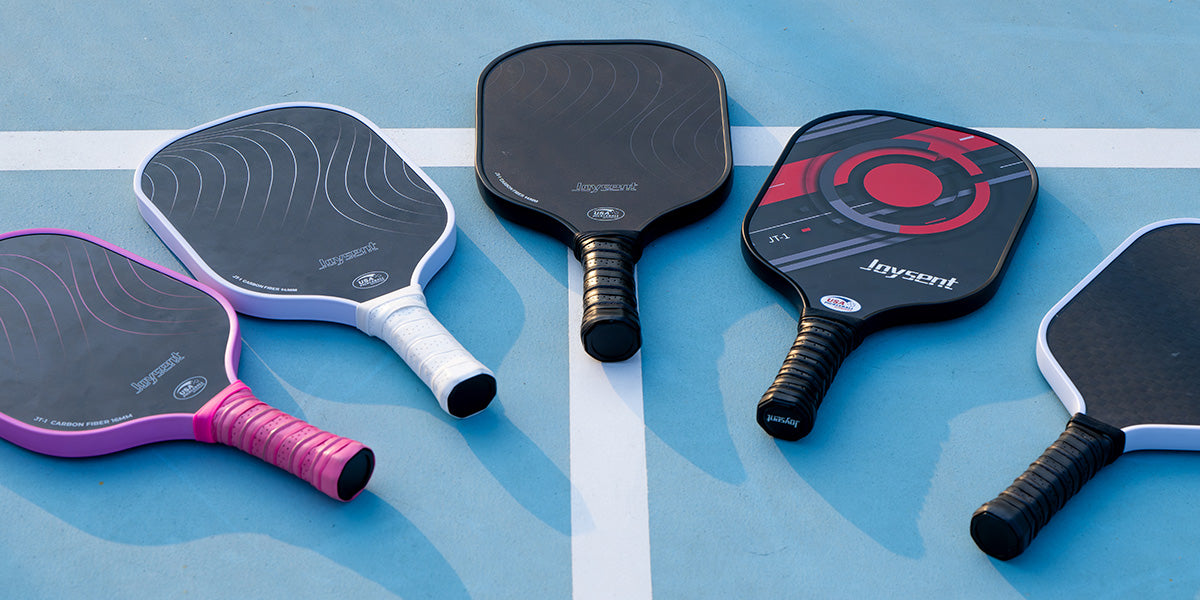
The Pickleball Paddle Buyer's Survival Guide: 5 Most Misinterpreted Specs
Why Specs Lie to Beginners
New players often treat paddle specs like a simple math equation, assuming bigger numbers always mean better performance. But here's the reality: reading paddle parameters is more like interpreting sheet music. You need to understand the physics behind each symbol to compose your perfect shot.
Mythbuster 1
"The Lightweight Obsession: When Feather-Light Becomes a Flaw"
Your body perceives weight differently when holding versus swinging. Ultra-light paddles (<190g) with poor weight distribution create a "fishing rod effect" – you'll exhaust energy controlling the wobbling head, defeating the purpose of going light.
Swing test: Grip the base and make rapid circular motions. A well-engineered paddle should feel like an arm extension, not a wobbly pendulum.
Mythbuster 2
"The Sweet Spot Paradox: Marketing Claims vs Measurable Reality"
The sweet spot isn't a fixed zone but a performance battlefield. Some brands inflate size by including areas with 50% power drop-off. The real effective sweet spot could be 35% smaller than advertised.
Coin tap test: A crisp "ping" lasting over 0.8 seconds reveals the true sweet spot.
Mythbuster 3
"Balance Point ≠ Center of Gravity: The 3D Physics You're Missing"
Traditional balance measurements focus only on the long axis, but real-world hits involve force transfer across X/Y/Z axes. Head-heavy designs without torque control make spin shots unpredictable.
3D balance check: Rest the paddle horizontally on a bottle cap. Premium models maintain stability within 20° tilt.
Mythbuster 4
"The Thickness Illusion: Why 0.1mm Changes Everything"
A 16mm paddle with loose honeycomb cores can deform easier than a 13mm version with dense patterns. Think Eiffel Tower's strength comes from truss design, not sheer steel volume.
Thumb press test: Quality paddles rebound within 1.2 seconds. Delayed recovery (>2s) indicates structural flaws.
Mythbuster 5
"Spin Science: When Texture Engineering Meets Quantum Physics"
Basic rough surfaces work like sandpaper – strong initial spin that rapidly degrades. Modern laser-etching creates microscopic directional channels, boosting spin efficiency 300% with 5x lifespan.
Fingernail test: Drag your nail at 45°. Premium textures create consistent resistance waves, mimicking vinyl record grooves.
From Specs to Success
You now hold the decoder ring for paddle specs. Remember: premium gear won't make you insta-pro, but it ensures every ounce of effort translates into measurable growth.
Previous post
Carbon Fiber vs. Fiberglass: How Core Materials Affect Your Pickleball Paddle Feel
Next post








